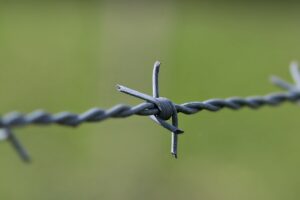Blogposts
Should we increase greenspace to improve living environments in Dutch prisons?
Jacob Jordaan, Pauline Jacobs There is growing consensus among academics and policy makers that the living environments in Dutch prisons need to be improved. This belief is fuelled by the idea that better living environments will enhance the well-being of both prisoners and prison staff. Also, it will strengthen the effectiveness of the criminal sentencing system, as prisoners who are incarcerated in better living environments are less likely to relapse into criminal behaviour after completing their sentence (Mann, Fitzalan Howard and Tew, 2018). Within this context, contemporary prison research is focused on obtaining more evidence and a better understanding of elements of prison living environments that are most instrumental in improving prisoner and staff well-being and that strengthen their impact on the effectiveness of prison sentencing. As recent research on UK prisons suggests (Moran, Jones, Jordaan & Porter 2021a), the current concept of the prison living environment may be too narrowly defined and should also include greenspace of outdoor prison terrains and their immediate surroundings.
There is growing consensus among academics and policy makers that the living environments in Dutch prisons need to be improved. This belief is fuelled by the idea that better living environments will enhance the well-being of both prisoners and prison staff. Also, it will strengthen the effectiveness of the criminal sentencing system, as prisoners who are incarcerated in better living environments are less likely to relapse into criminal behaviour after completing their sentence (Mann, Fitzalan Howard and Tew, 2018). Within this context, contemporary prison research is focused on obtaining more evidence and a better understanding of elements of prison living environments that are most instrumental in improving prisoner and staff well-being and that strengthen their impact on the effectiveness of prison sentencing. As recent research on UK prisons suggests (Moran, Jones, Jordaan & Porter 2021a), the current concept of the prison living environment may be too narrowly defined and should also include greenspace of outdoor prison terrains and their immediate surroundings.
Although the growing recognition of the importance of the prison living environment is a relatively recent phenomenon, it is not difficult to imagine what the benefits are of creating better conditions in prisons. Prison living environments consist of a variety of elements, including relationships among prisoners and between prisoners and staff, family visits, schooling and exercise activities and prisoner autonomy (Boone, Althoff and Koenraadt 2016). Improving these factors will have an immediate impact on the well-being of prison populations, especially as they are often characterised by a range of social, financial, mental and emotional problems (Appelman, Dirkzwager and van der Laan 2021). Also prison staff, who often face heavy workloads under high pressure, will benefit from enhanced well-being among prisoners, as this will make their working environment safer and easier to run prisons more effectively and efficiently.
Greenspace and well-being in UK prisons
Recent research on prisons in the UK by a multidisciplinary group of researchers from Birmingham University and Utrecht University (Moran, Jones, Jordaan and Porter 2021a) provides novel evidence showing that the prison living environment and its impact on prisoner and staff well-being extends beyond conditions that exist inside prison buildings. Adding to research strands that relate environmental characteristics to human well-being, these researchers collected prison level data for over 100 prisons in England and Wales to conduct regression analysis, estimating the effect of the extent of greenspace of prison terrains on prisoner well-being. In the absence of existing datasets that contain information on the characteristics of prison terrains, the researchers resorted to creating a novel indicator of greenspace of the terrains. Using geographic information software (GIS), they applied an innovative methodology by overlaying digital ordnance survey maps capturing various types of land use with aerial photographs of the prisons. This allowed them to calculate the percentage of each of the prison terrains that consists of greenspace such as grass, bushes, and trees.
The empirical findings show that greenspace is important for prisoner well-being, as it exercises significant and negative effects on the occurrences of prisoner self-harm, prisoner on prisoner assaults, and attacks on prison staff. The estimations control for a variety of prison characteristics and show that the effects of greenspace materialise irrespective of prison size, age, level of overcrowding and prison type (e.g. high security prisons, young offenders’ institutes, female prisons); factors that themselves also significantly impact on prisoner well-being. The magnitudes of the estimated effects of greenspace indicate that on average a 10% increase of greenspace of a prison’s terrains would generate decreases in the occurrences of prisoner self-harm, prisoner violence and assaults on staff by 3.5%, 6.6% and 3.2% respectively. Furthermore, the estimations also identified an important additional indirect effect, indicated by the finding that prisoner self-harm is significantly lower in prisons with low levels of assaults among prisoners and towards staff. This implies that increasing greenspace will have a direct effect on well-being through its negative impact on self-harm and an indirect effect by lowering occurrences of violence among prisoners and towards staff, which in turn improves the well-being of individual prisoners.
In a related study the same group of researchers examined whether greenspace also has a direct effect on the well-being of prison staff (Moran, Jones, Jordaan and Porter 2021b). This study shows that, whilst controlling for the effects of a number of prison characteristics – including incidences of prisoner self-harm and violence among prisoners and towards staff, which all negatively impact on staff well-being – prisons with a high percentage of greenspace are characterised by a significantly lower level of staff sickness absence. Interpreting a low level of staff sickness absence to indicate a relative high level of prison staff well-being, these results further confirm the positive effect of greenspace on well-being. In extension of these two studies, the group of researchers is currently examining whether the location of prisons also matters for prisoner well-being. Initial results suggest that this is the case, as the amount of greenspace of the area within the immediate vicinity but outside of the prisons walls exercises separate significant negative effects on occurrences of prisoner self-harm and violence among prisoners and towards staff.
Greenspace and living environments in Dutch prisons
These novel findings on the important effects of greenspace on prisoner and staff well-being indicate that there is ample scope to further enrich research on the effects of living environments in Dutch prisons. At a conceptual level, the findings for UK prisons indicate that the notion of the prison living environment should not be treated as being exclusively related to conditions inside prison buildings. Instead, characteristics of prison terrains (as well as the physical location of prisons and characteristics of areas surrounding prisons) should also be seen as important components of this living environment. It is therefore crucial to develop a more holistic and flexible approach towards the concept of the prison living environment that, next to factors such as the atmosphere between prisoners and staff members, family visits, prisoner autonomy and safety, also incorporates characteristics of the locations and terrains of the prisons, all of which can be important for prisoner and prison staff well-being.
In terms of new research questions, it will be very interesting to determine to what extent greenspace impacts on well-being in Dutch prisons. To calculate the degree of greenspace of Dutch prisons, the GIS methodology developed for the research on UK prisons could serve as the assessment framework. Adding greenspace to the analysis of Dutch prisons would also allow for the identification of the relative importance of elements of living environments inside and outside prison buildings. This was not done in the studies on UK prisons, which were focused primarily on identifying the impact of prison terrain characteristics. It would also be interesting to assess whether the effects of living environments inside and outside prison buildings influence and/or reinforce each other. For instance, it may be that programs promoting prison visits by friends and family have stronger effects when such visits occur on prison grounds that have a sufficient amount of greenspace. Another example is that prisoner well-being may benefit from facilitating the visibility of greenspace from inside prisons and by introducing or increasing greenspace inside prison buildings. Previous research on the provision of greenspace in prisons indicates that this may have beneficial health effects (Molleman 2014). The findings for the UK that identify powerful effects of greenspace on other aspects of prisoner well-being suggest that increasing greenspace inside prison buildings can generate impacts on well-being that may transcend effects on prisoners’ health.
It is clear that there is a growing recognition that Dutch prisons need to provide better living environments, as this creates positive effects for prisoners, prison staff and finally also society. Research on prisoner and staff well-being and the effectiveness of the prison sentencing system will benefit from the notion that characteristics of prison terrains such as greenspace also need to be treated as elements of these living environments. Doing so will result in a more comprehensive picture of the role of living environments in Dutch prisons and further inform policy makers to improve the Dutch prison system. Based on the UK evidence, such policy recommendations may include advice to increase the availability of greenspace of existing prisons and to consider the beneficial effects of greenspace in the planning of the location and design of new prisons.


